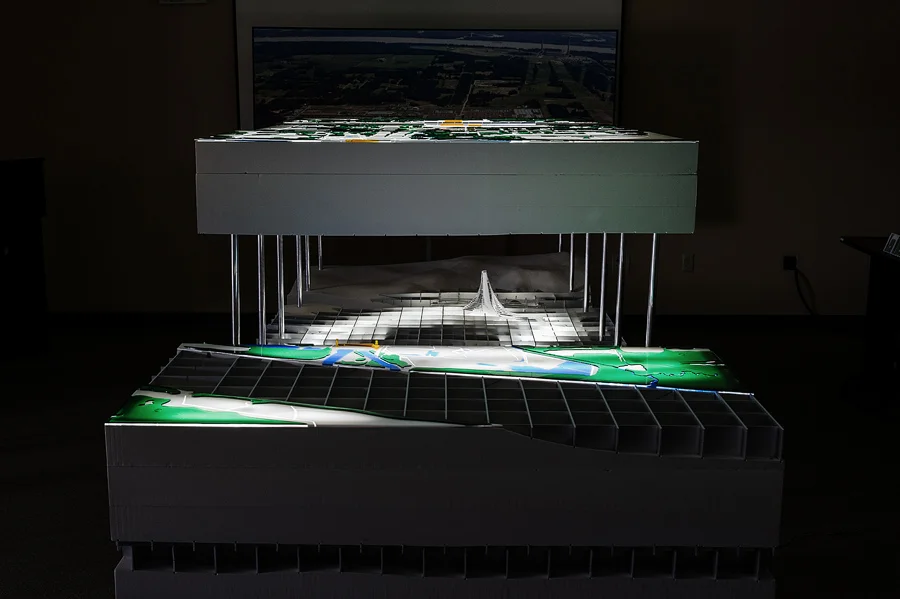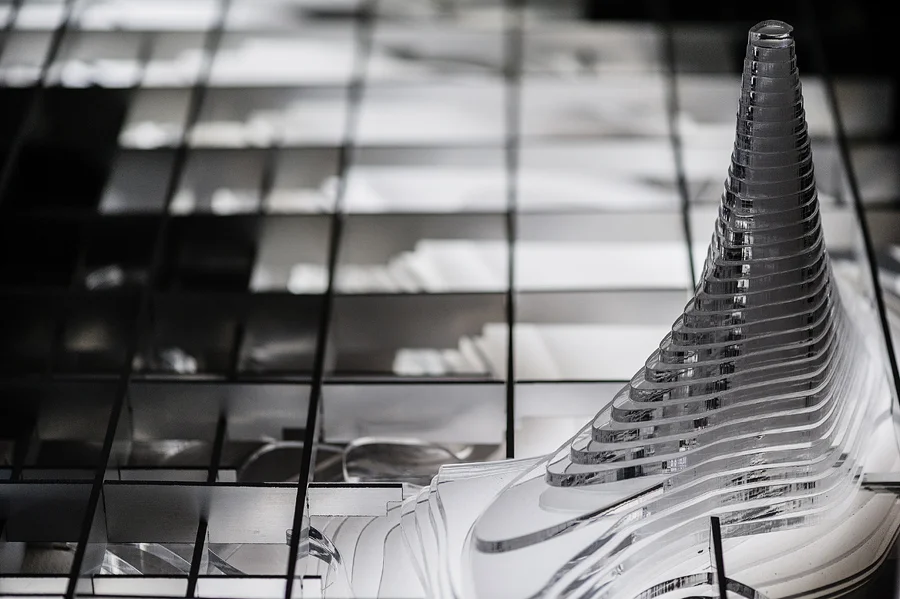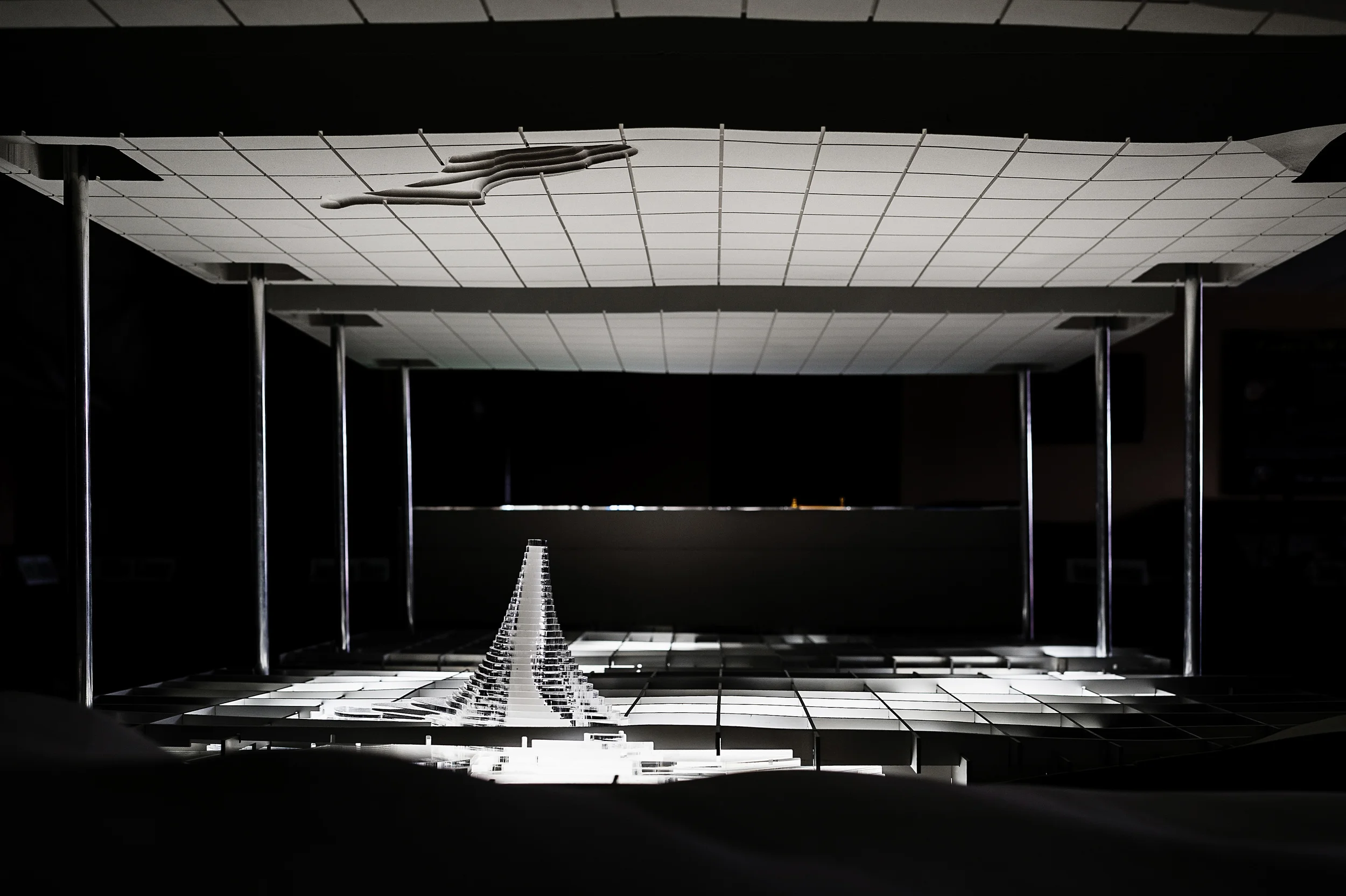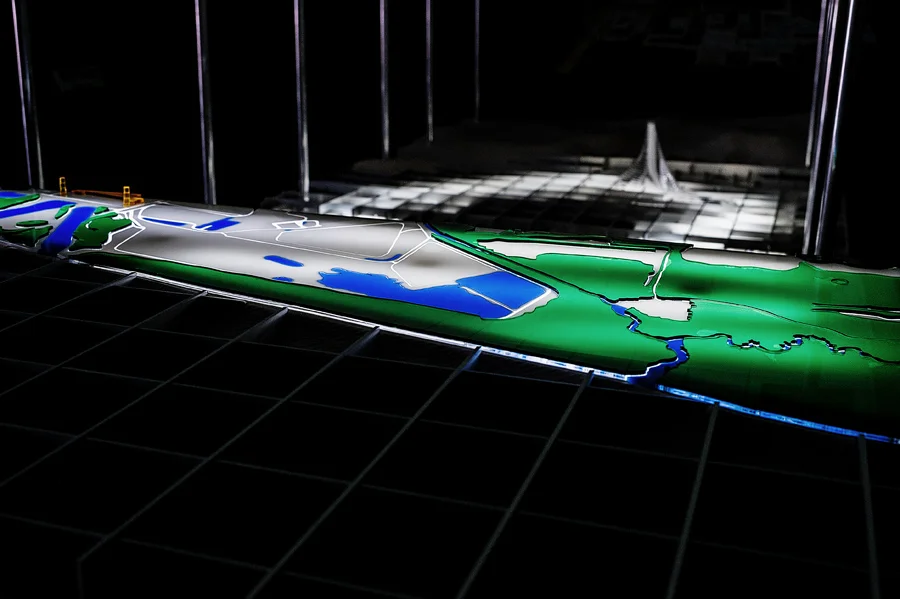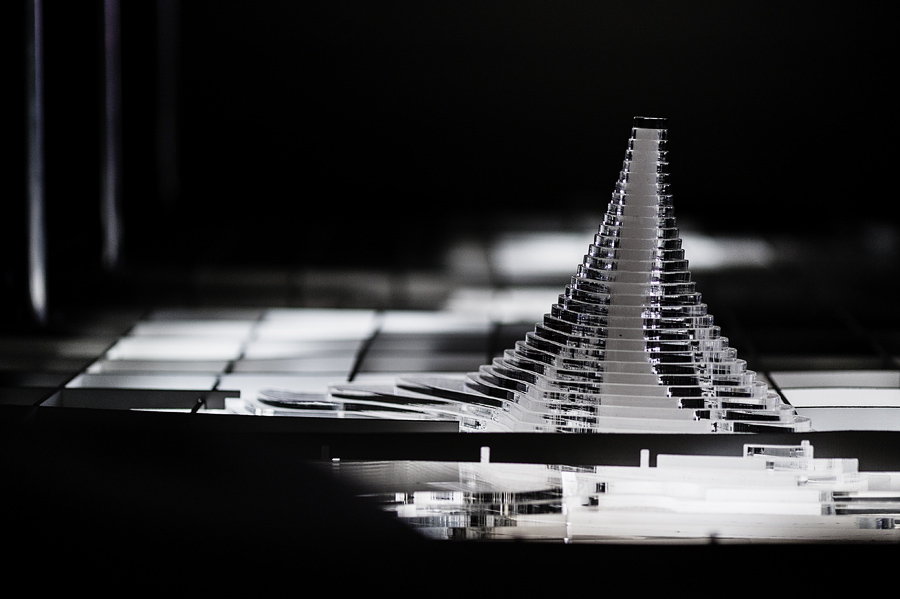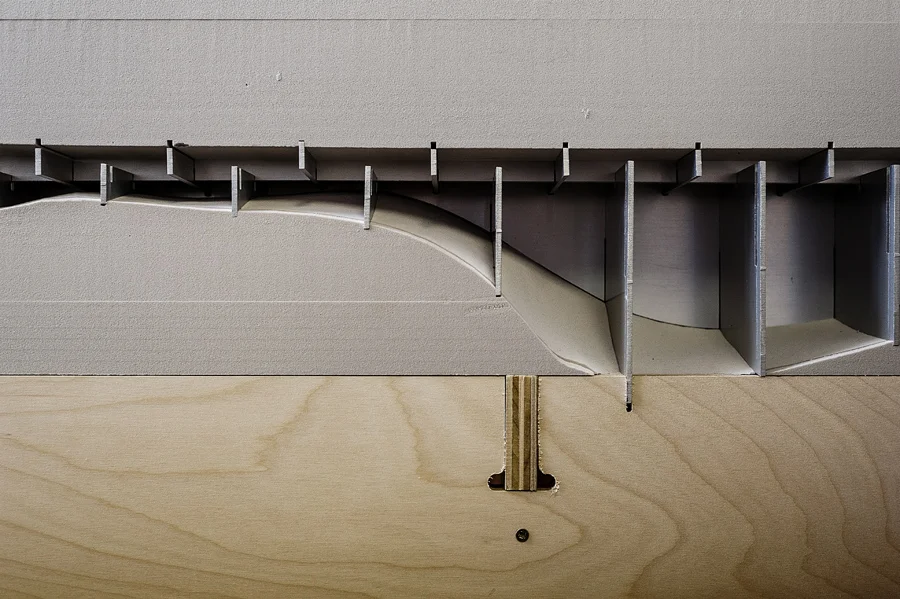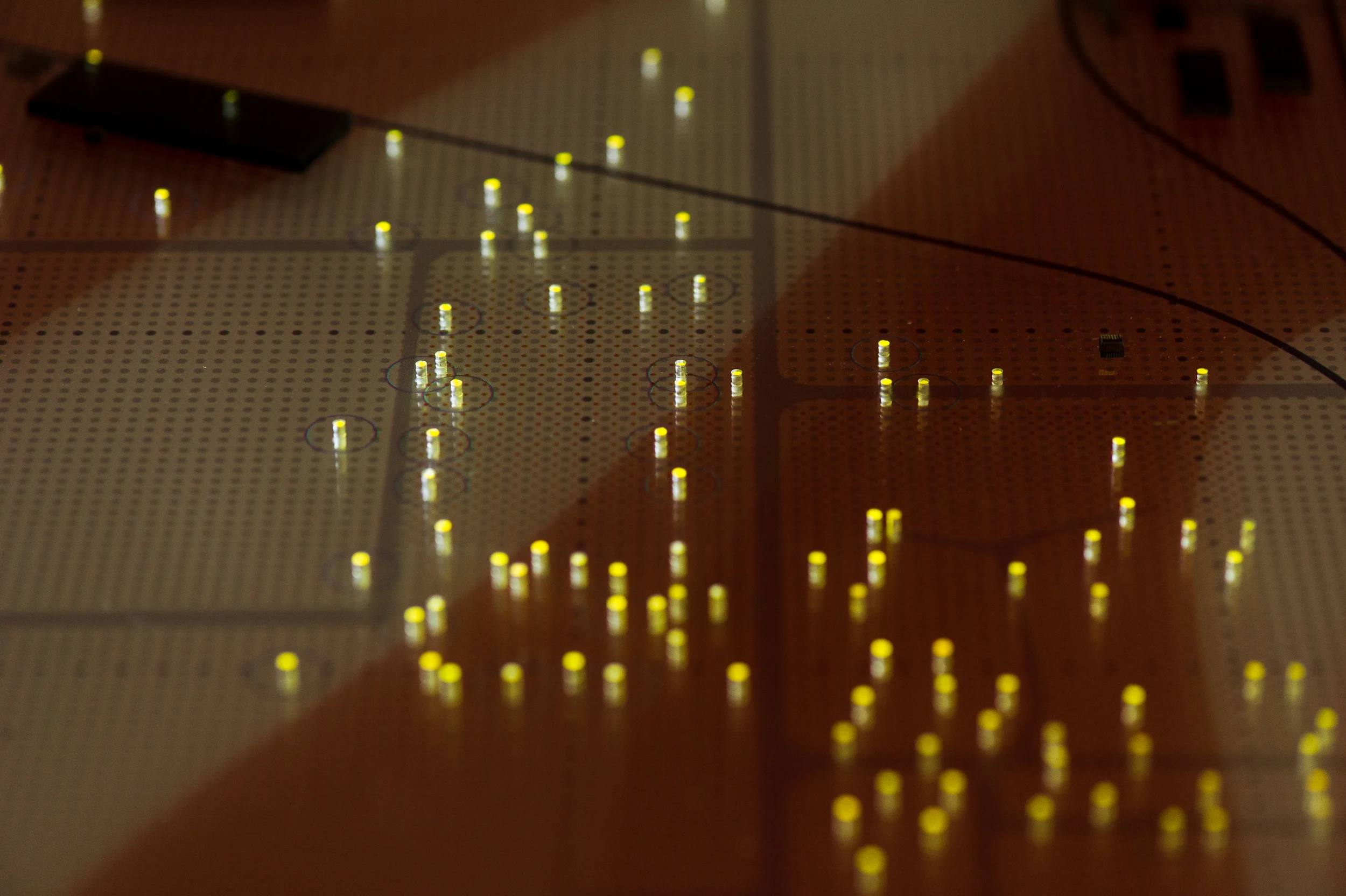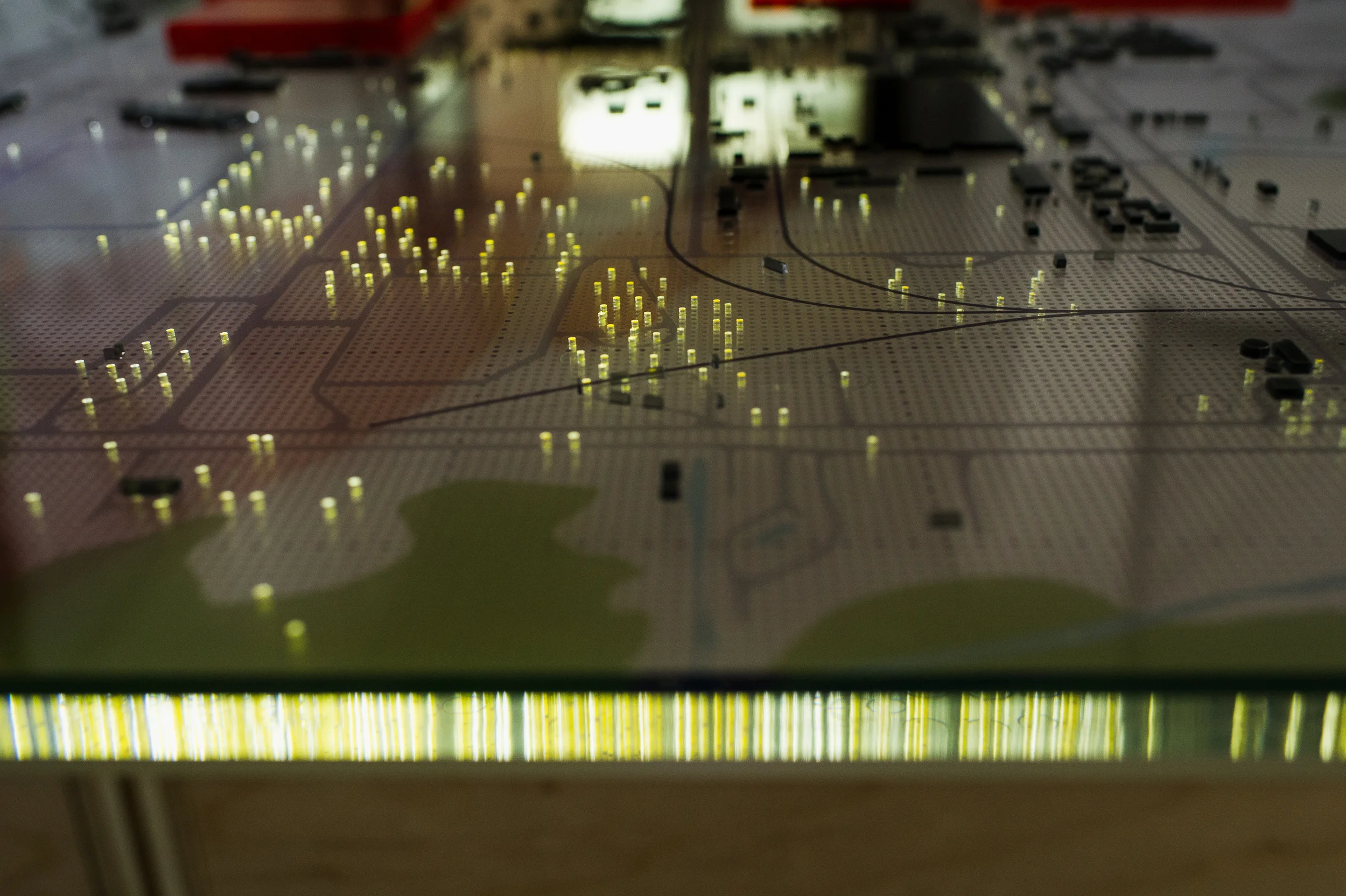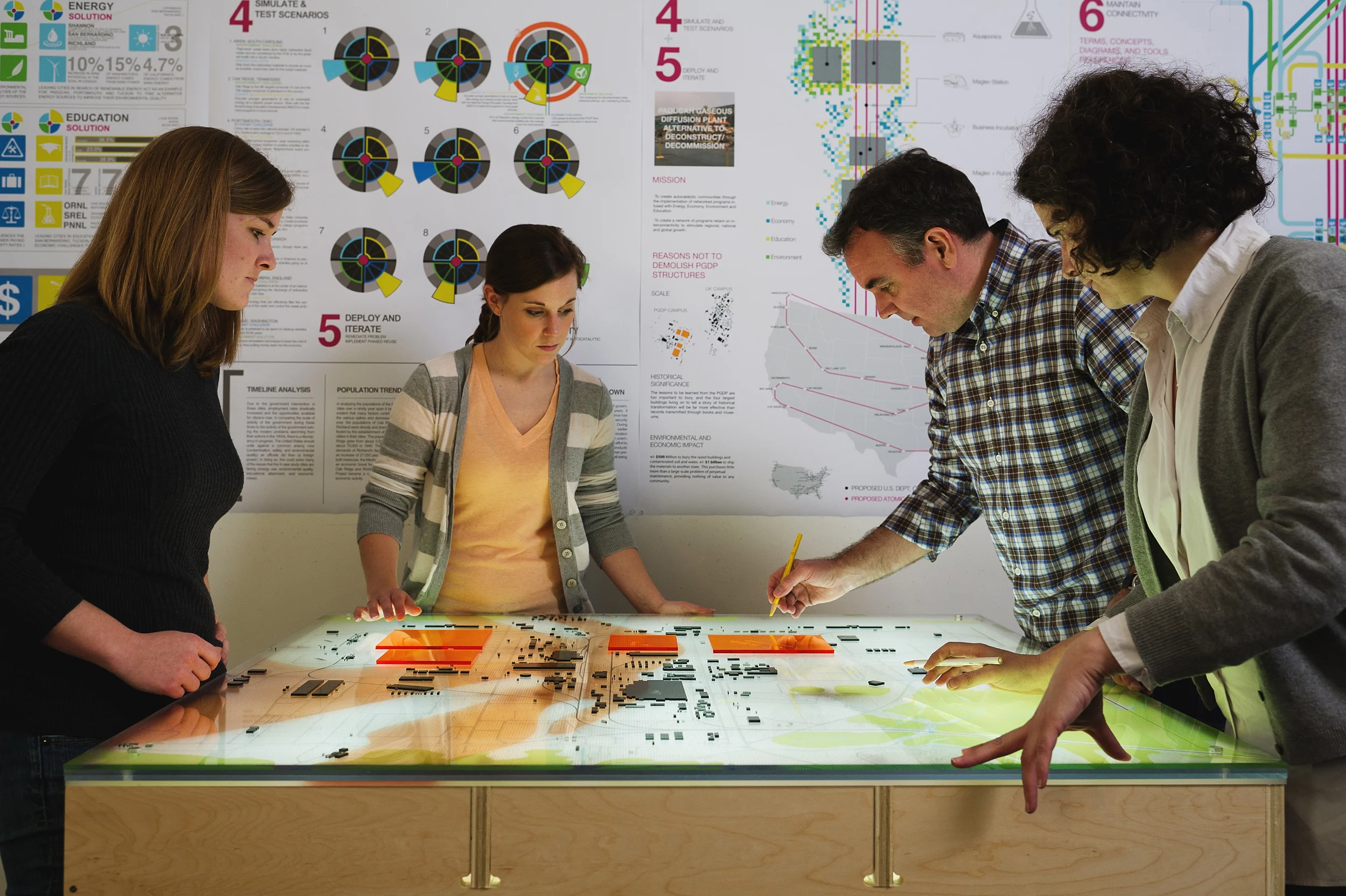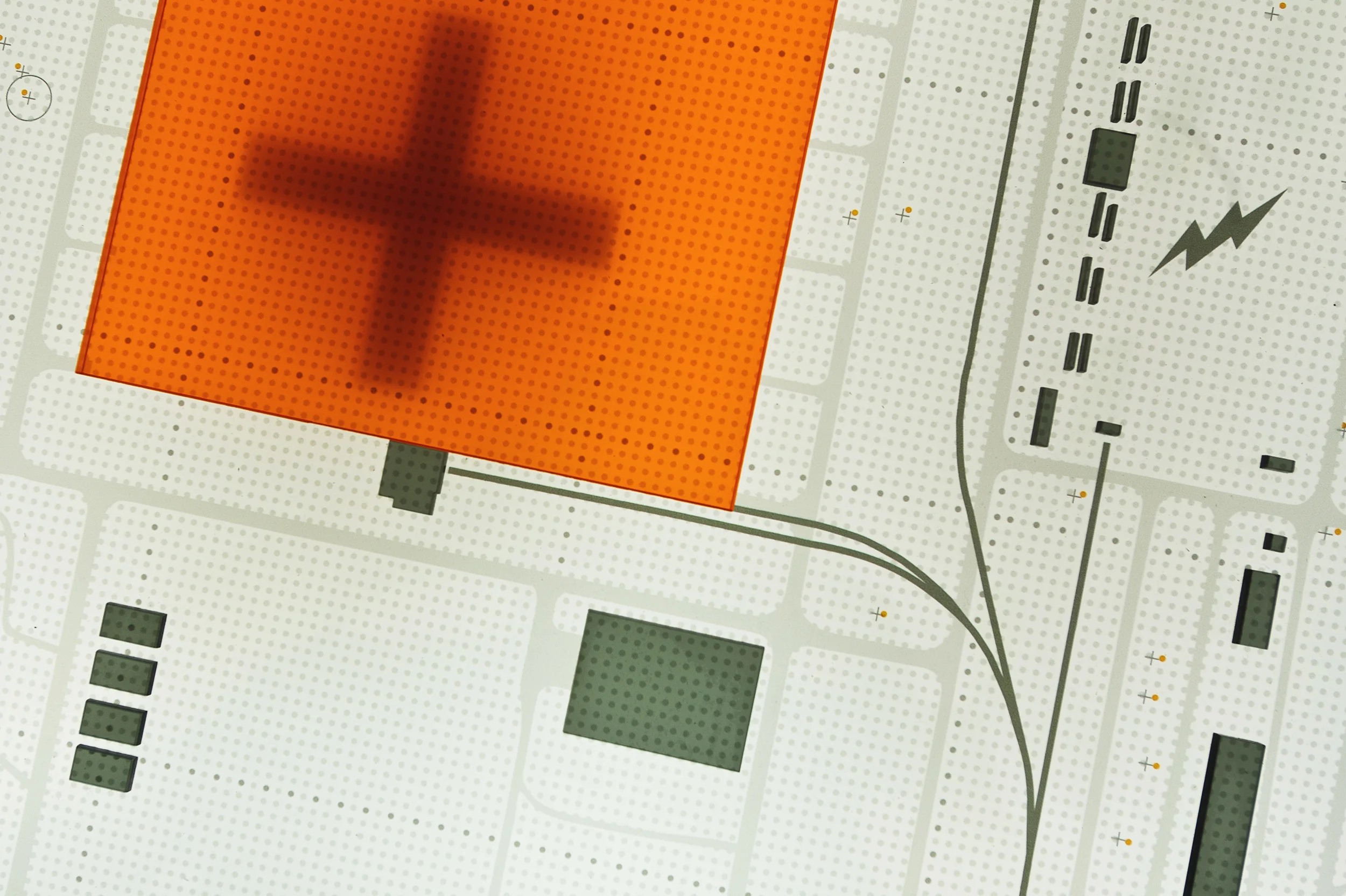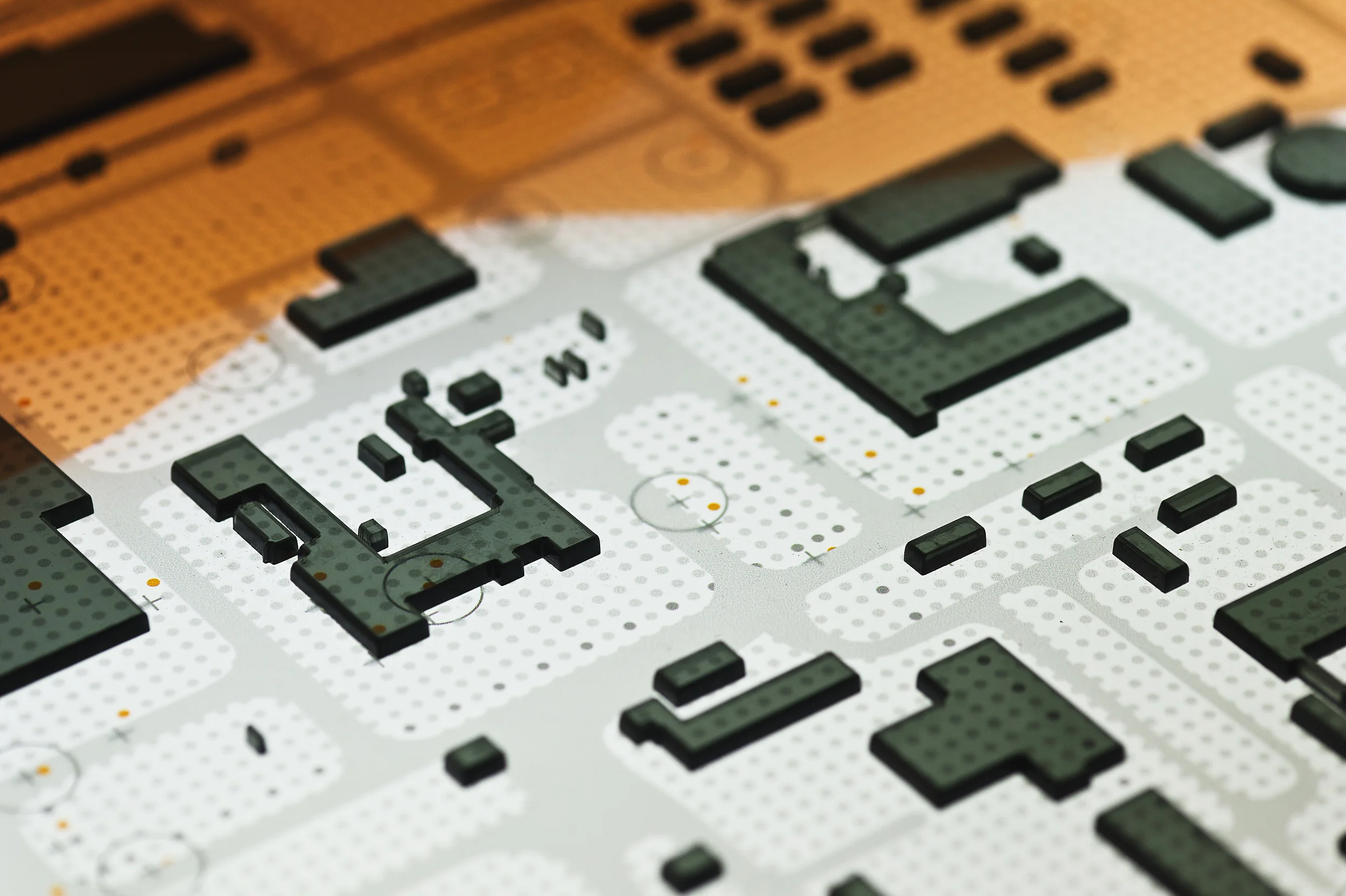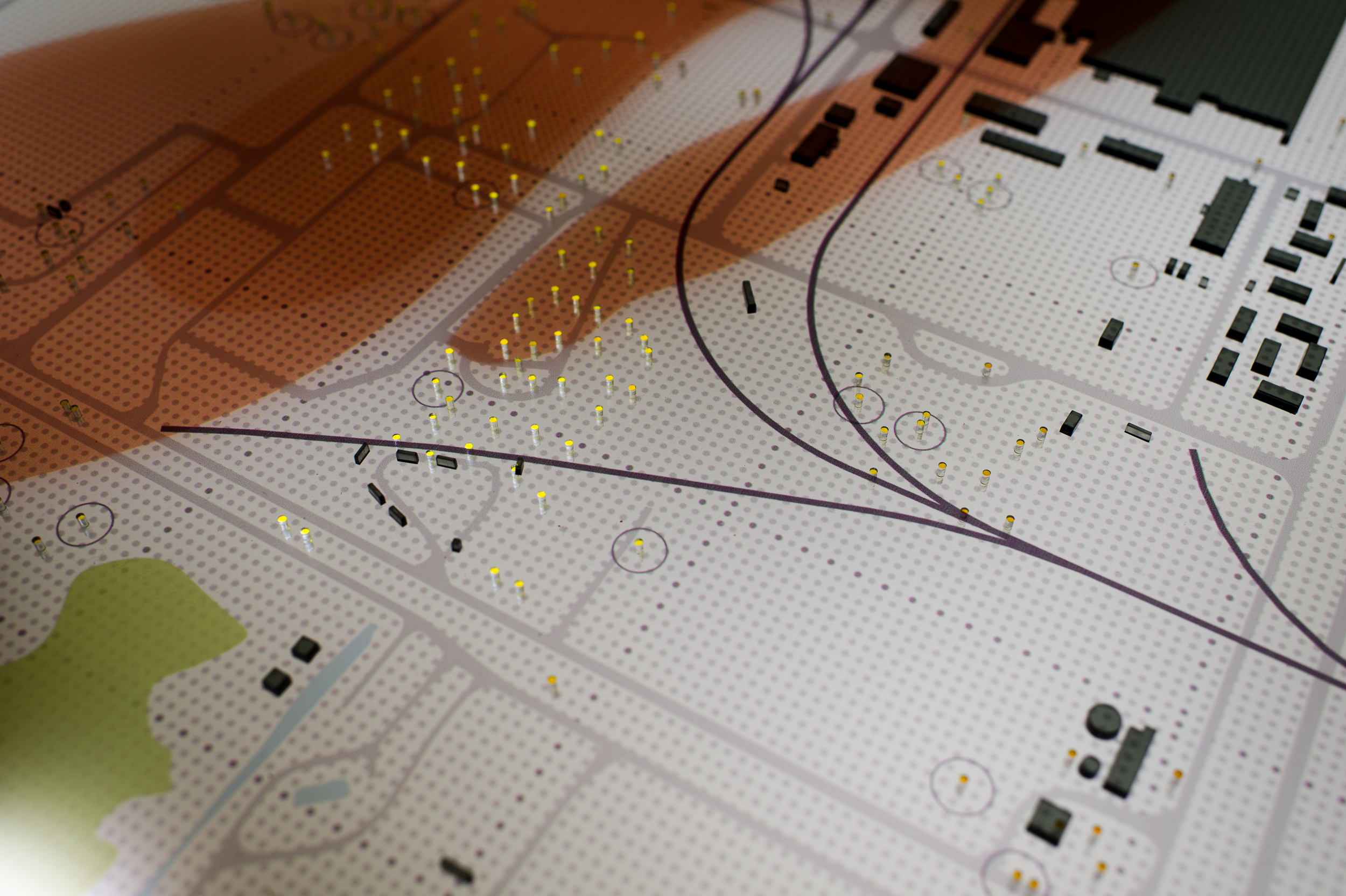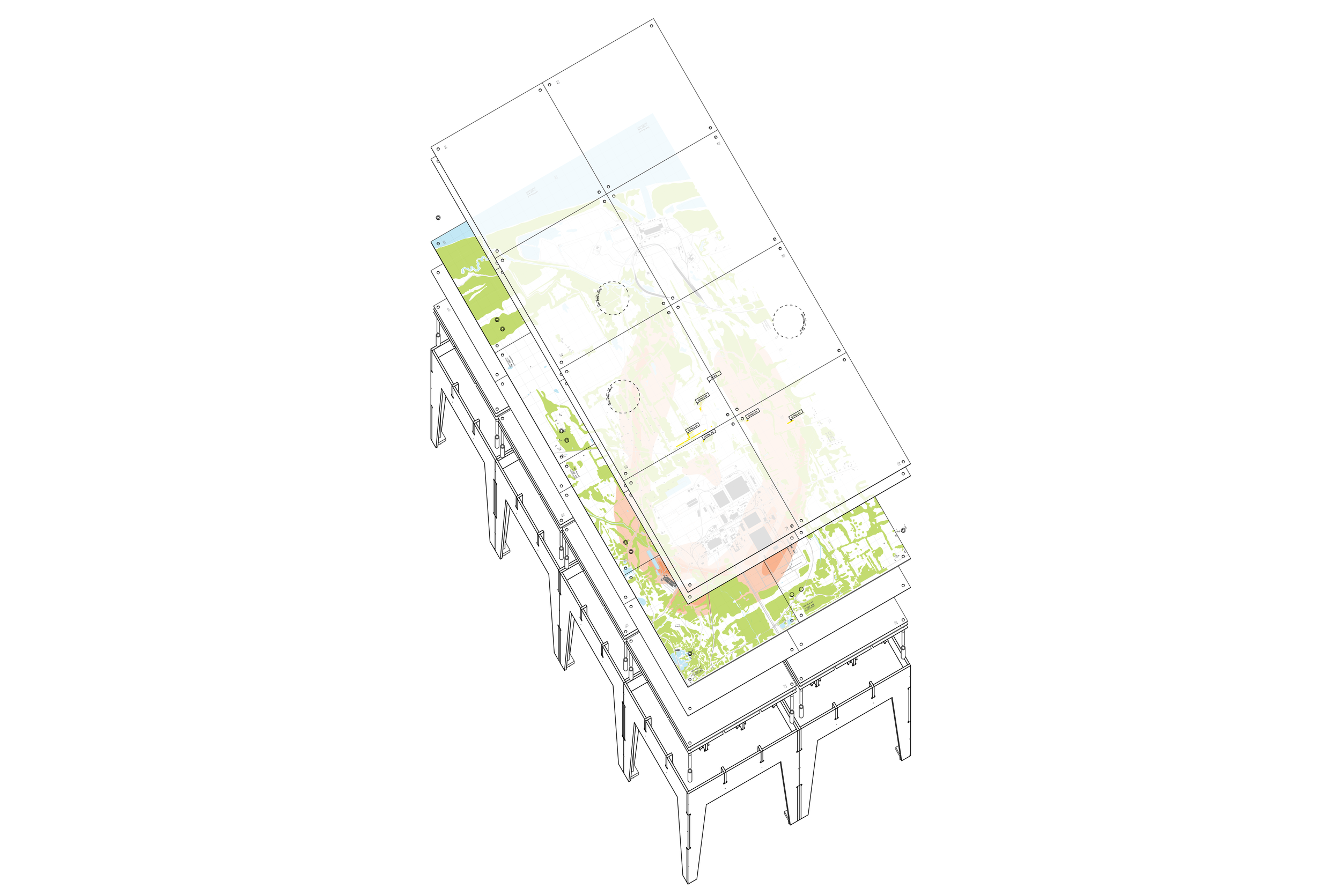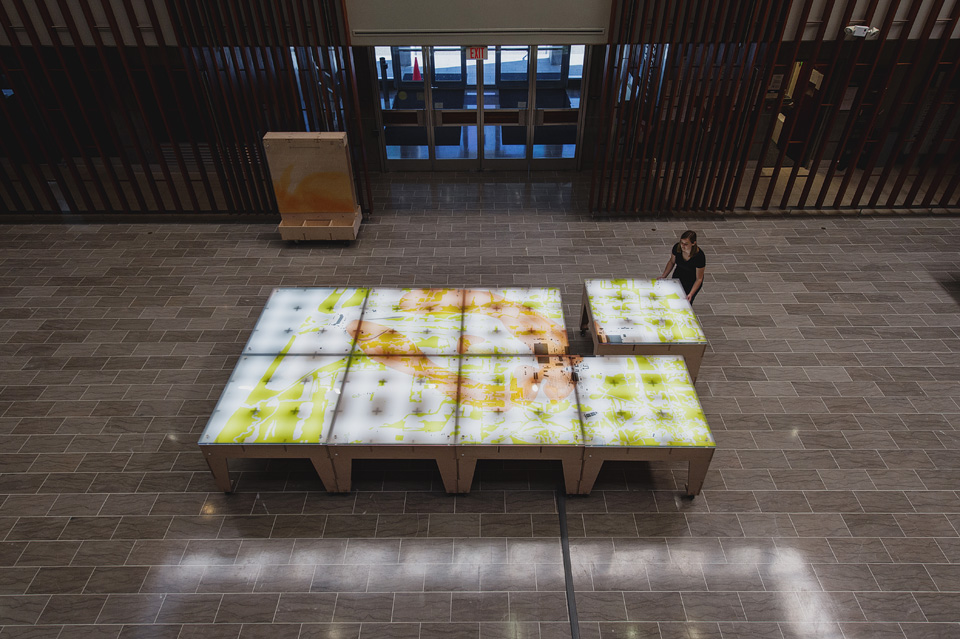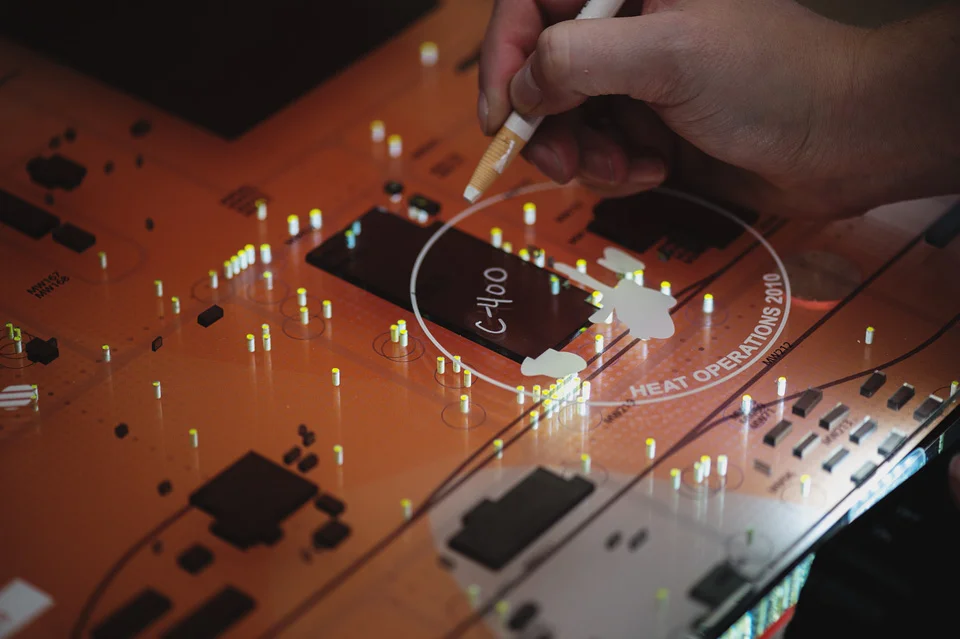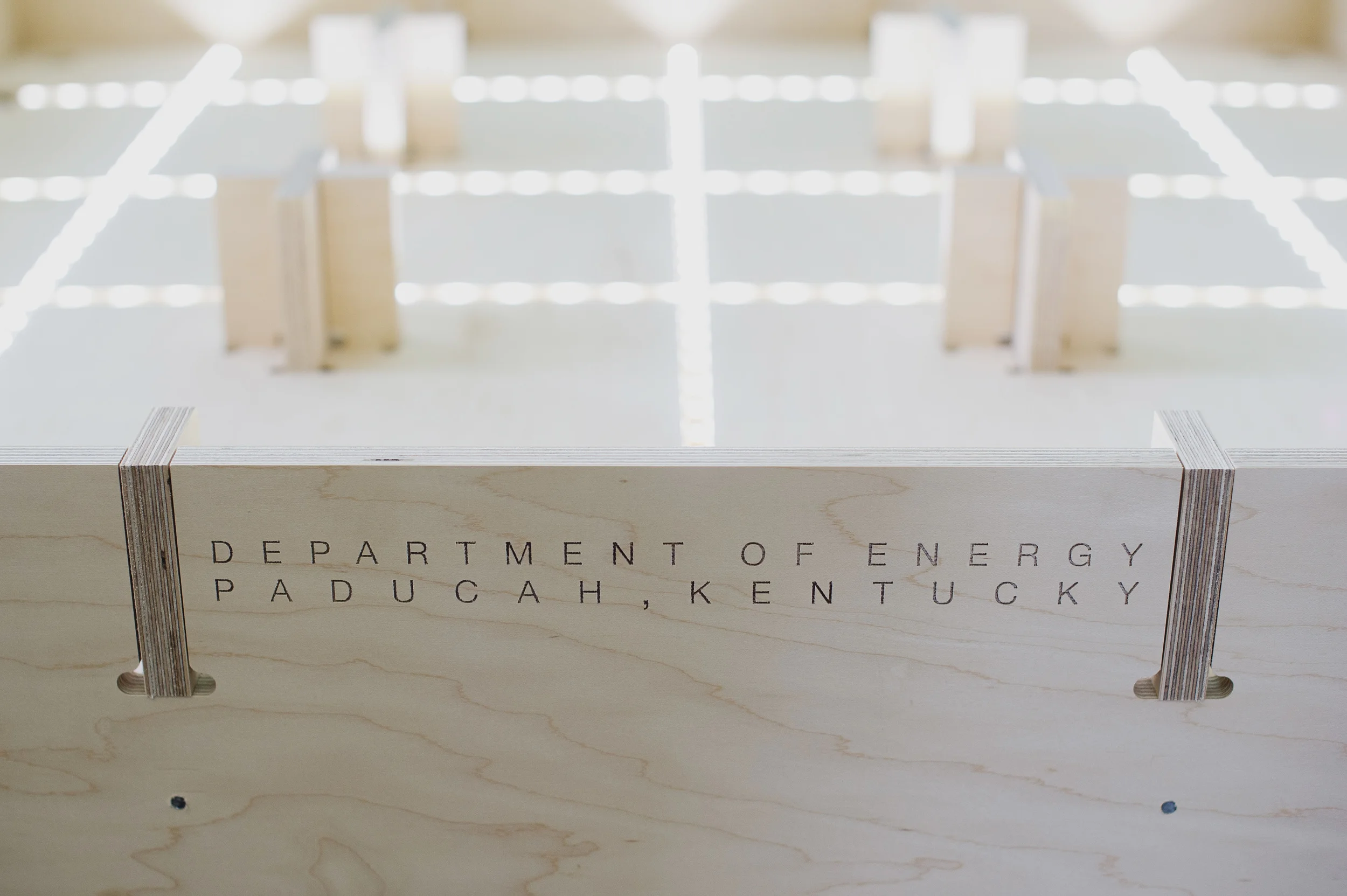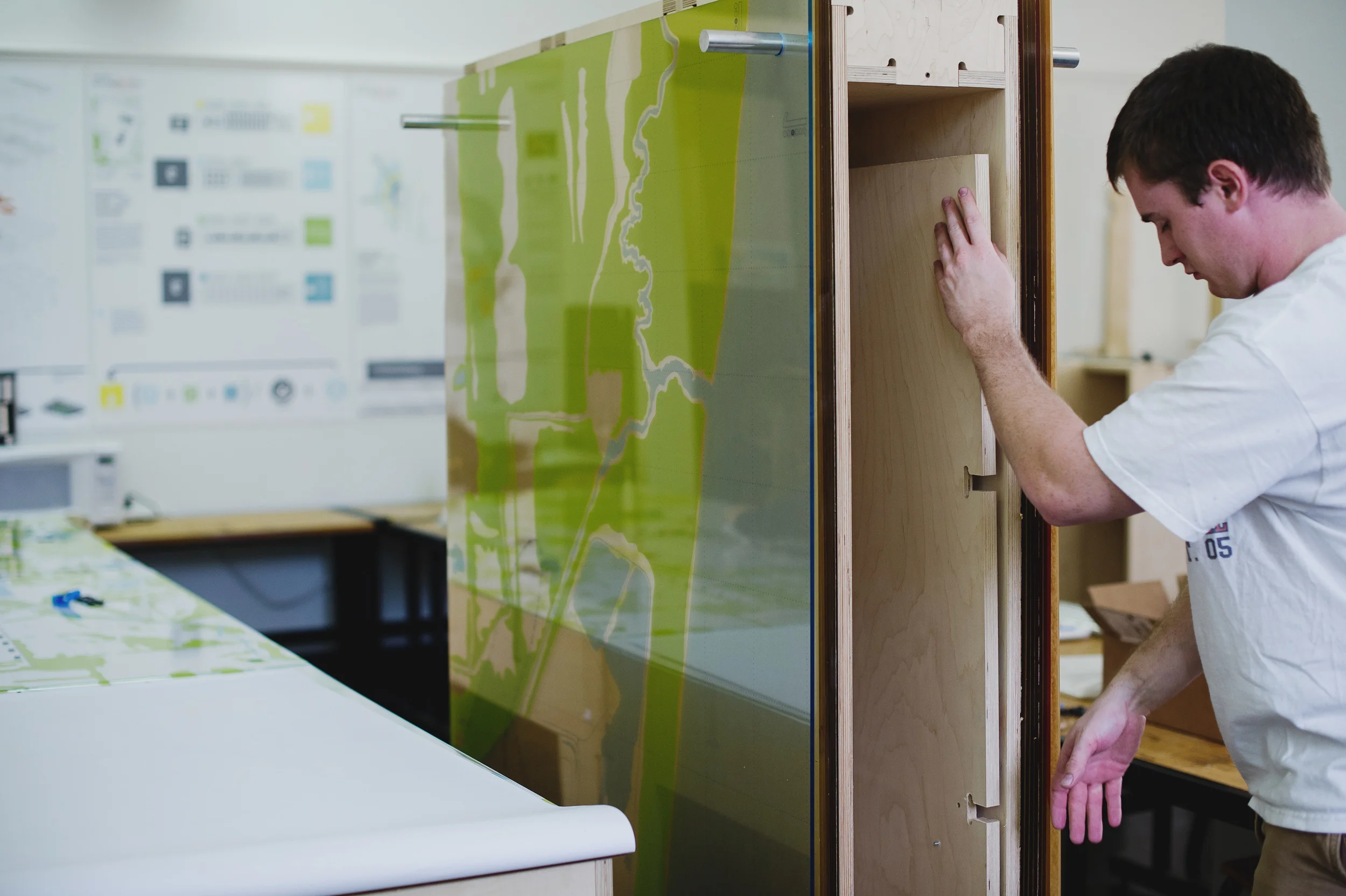ATOMIC CITY // MODELS
1:350 GROUNDWATER MODEL
PADUCAH GASEOUS DIFFUSION PLANT
Commissioned by a US Department of Energy grant, the University of Kentucky Center for Applied Energy Research partnered with the College of Design to tackle the problems facing the Paducah's Gaseous Diffusion Plant. The Atomic City Research Group studied the uranium enrichment facility site and presented current conditions via interactive models.
This first model is meant to be used as a tool for scientists to continue investigating the complexity of the leaked groundwater contaminates, while enlisting multidisciplinary input from others to contain and remediate.
In order to model the plume, core samples from monitoring wells were used as points to grasp the groundwater volume. The contamination plume is shaped by the surrounding physical make-up such as geology, geography, as well as the chemical make-up of the contaminations TCE and TECH-99. This dynamic unknown, along with the comprehension of the contamination, are ever changing.
This model was designed concurrently with long-term strategic planning solutions, as a part of a design studio, the Atomic Cities Project.
1:150 SITE MODEL
PADUCAH GASEOUS DIFFUSION PLANT
The second PGDP site model required interactive attributes to encourage its use as a communicative tool for the UK CAER and the US Department of Energy. It focuses on the contamination site source that leaked 10 square miles, currently creeping toward the Ohio River. Map layers can be swapped and added for updated information. Tool kit pieces and grease pencils are included for discussion and collaboration among scientists, officials and the public.
This model was exhibited in the 2012 International Architecture Biennale Rotterdam, "Making City" and is currently exhibited at the WKCTC in Paducah, KY.
1:160 SITE MODEL
PADUCAH GASEOUS DIFFUSION PLANT
The final US DOE commission was an eight piece 8'X16' model featuring the extents of the groundwater contamination. It contained each of the 3,000 updated monitoring wells and core sample locations. Both plume contaminates, TCE and TECH-99, each with their own unique characteristics, are represented by layer. This particular model includes layers of information describing the years of remediation implemented on site and its affects on the size and shape of the plume.
This larger scale model required an organizational number system so that the layers for each of the eight pieces could be easily identifiable. To act as more than an exhibition display, the model remained interactive with a communicative tool kit and interchangeable layers of information.
The PGDP 1:160 Plant Site Model is currently exhibited at the WKCTC in Paducah, KY.
Photos: Magnus Lindqvist of Glint Studios
Research Team: Carolyn Parrish, Joe O’Toole, Maggie Clines, Professor Gary Rohrbacher, and Professor Anne Filson

